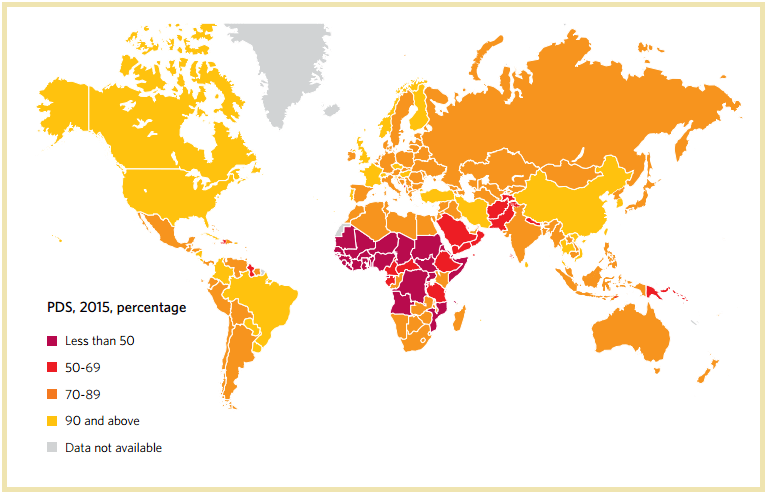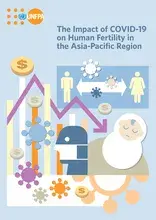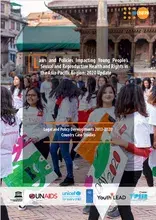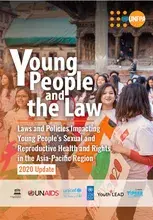Ingrid FitzGerald, Regional Gender and Human Rights Adviser, UNFPA Asia-Pacific & Yoriko Yasukawa, Regional Director, UNFPA Asia-Pacific.
As the 61st Commission on the Status of Women takes place at the United Nations in New York, a reminder that without universal access to sexual and reproductive health and rights, women will never achieve gender equality and economic empowerment.
Gender equality, Planet 50-50, #BeBoldForChange. Themes and hashtags that flooded social media feeds last week as the world marked International Women’s Day. They are now being revisited at the 61st Commission on the Status of Women at United Nations headquarters in New York, where governments, international organizations and UN agencies deliberate over the next fortnight on "women’s economic empowerment in the changing world of work".
These are highly challenging times for those of us who work on women’s rights across the spectrum. Significant gains were made over the 15-year span of the Millennium Development Goals. But today, as we navigate the era of the 2030 Agenda for Sustainable Development, the waters are far more turbulent, especially in the Asia-Pacific region.
Let's be frank
Sustainable Development Goal #5, Gender Equality, aims to end all forms of sexual discrimination, eliminate all forms of violence and harmful practices such as child marriage, and critically, ensure universal access to sexual and reproductive health and reproductive rights.
But let’s be frank. We will never achieve gender equality and economic empowerment for women without universal access to sexual and reproductive health and rights.
These services and rights – and family planning in particular – are fundamental to achieving the SDGs. These rights need to be front and centre of the development agenda and the UN meeting on women itself, even if governments and other players sometimes see these as sensitive and controversial. And these rights are indivisible from other rights; we cannot separate them.
We have solid data and evidence to support these contentions.
Due to a lack of access to information or services, or a lack of support from partners or communities, an estimated 225 million women globally are not using safe and effective family-planning methods. Most of these women live in 69 of the poorest countries on Earth.
Worse in Asia
The unmet need for family planning is high in Asia-Pacific, at nearly 81 million women, almost two-thirds of them in South Asia alone.
If the need for modern contraception as well as maternal and newborn services were fully met, unintended pregnancies would drop dramatically by 74%.
Maternal mortality in the region would also drop significantly, from the current estimate of 84,000 deaths per year.
In low- and middle-income countries, complications from pregnancy and childbirth are a leading killer of teenage girls. Their babies also face a higher risk of dying than those of older women. Yet adolescents face enormous barriers to accessing reproductive health information and services.
When women and couples can plan their families, women are better enabled to complete their education. This in turn strengthens their autonomy within their households and improves their earning power. Each additional year of schooling for girls boosts their employment prospects, increases future earnings by about 10% and reduces infant mortality by up to 10%. Cumulatively, these benefits contribute to poverty reduction and development.
Difference in dollars
The economic benefits from investing in family planning are clear. On average, a dollar invested in family planning saves about two dollars in expenses related to antenatal, maternal and newborn healthcare.
In countries with the highest unmet need for family planning, the return on investment is even more dramatic. For example, in the Pacific island nation of Vanuatu, for every dollar spent to reduce unmet need by 2020, between $9 and $16 could be saved on health and education, making development goals more attainable and more affordable.
The lifetime opportunity cost related to adolescent pregnancy – a measure of the annual income a young mother misses out on over her lifetime – ranges from 1% of annual gross domestic product in a large country such as China, to 30% of annual GDP in a smaller economy such as Uganda.
If adolescent girls in Brazil and India were able to wait until their early twenties to have children, the increased economic productivity would equal more than $3.5 billion and $7.7 billion, respectively.
Worldwide, among women aged 25-39, female labour-force participation decreases with each additional child by 10-15%.
Ultimately, behind these figures and data are the lives and stories of real people, including the hundreds of millions of women and girls in danger of not being able to fulfill their true potential.
We urge all governments, civil society and UN participants at CSW 61 to keep reproductive rights firmly at the centre of the debate, now and in the future. Rolling back these rights severely undermines the potential and well-being of individuals and economies. Until we fulfill this key target and truly be bold for change, women will never achieve genuine and complete equality – and economic empowerment -- in our troubled and rapidly changing world.
This opinion piece was published by the World Economic Forum on March 14, 2017





